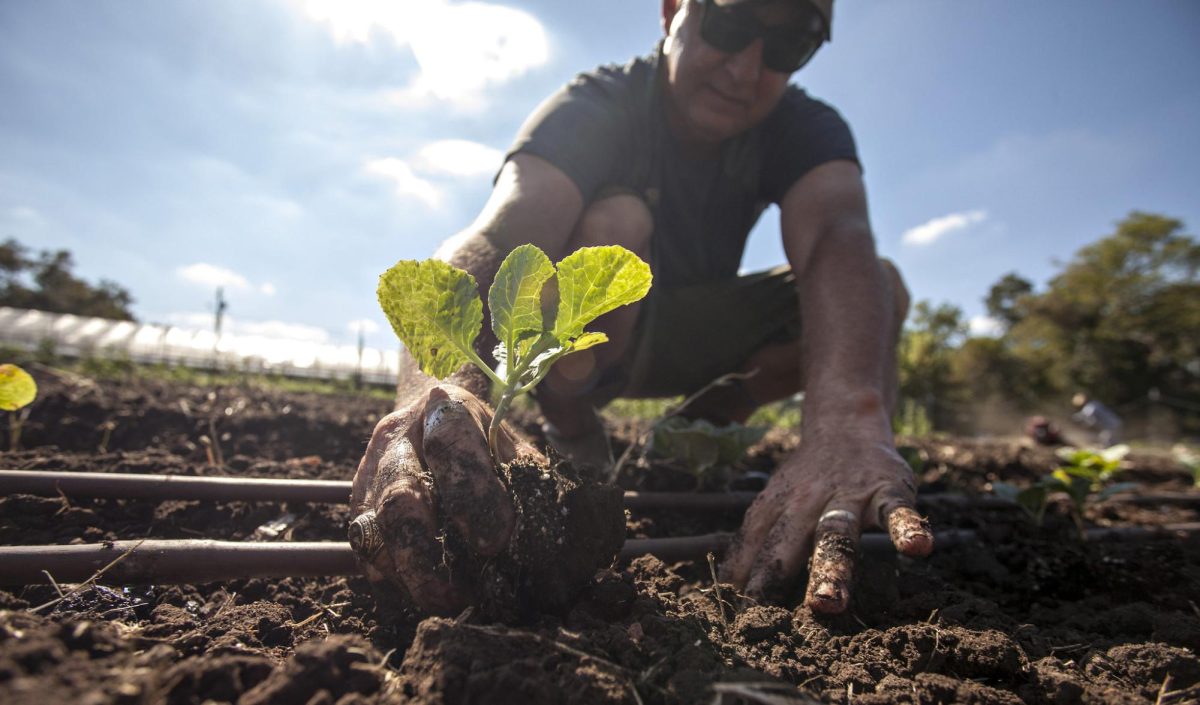According to the United States Department of Agriculture (USDA) 2021 Food Dollar, “For calendar year 2021, the farm share was 14.5 cents of each food dollar expenditure and the marketing bill was 85.5 cents accounting for the remainder of the food dollar.”
Lack of compensation for producers is a growing problem that most consumers are unaware of, but if we do not support our farmers and ranchers, the future of our food supply is unlikely. The simple solution to this complex problem is to buy our food products locally through farm to table outlets, such as farmer’s markets.
The farm to table movement meets the demand of consumers wanting to know where their food comes from and provides producers with adequate support.
According to Webstaurants Store Blog, “The farm to table movement is a social movement where restaurants (or consumers) source their ingredients from local farms, usually through direct acquisition from a farmer.”
Selling their product through a farm to table outlet provides farmers and ranchers the support they deserve through word of mouth and the financial compensation they need to sustain their operations and families.
In Marissa Iacono’s thesis published by the University of New Hampshire in 2013, she states, “The quality of food you buy locally could easily out-compete produce purchased at your grocery store.”
Due to lengthy shipping distances and the processing that our food undergoes before reaching the grocery stores, the fruits and vegetables sold in grocery stores are typically harvested two to three weeks before they are ripe. Whereas in a farm to table setting, farmers and ranchers can harvest their produce at the right time; therefore, the crop has more natural flavors and fewer preservatives.
On the other hand, “products bought directly from producers can be more expensive than the same product bought in the grocery store,” according to Webstaurants Store Blog.
If farmers and ranchers can sell their products directly to their customers, the producers are going to set their prices competitive with those of the grocery store. Simultaneously, producers will set their prices so that they can ensure a profit is made on a particular product, even though this can sometimes mean that products bought locally can be more expensive than the same product bought in grocery stores.
Some farmers and ranchers have already begun to notice the demand for direct consumption and have decided to take matters into their own hands. An internationally well-respected Brahman cattle breeder, BR Cutrer Inc., established a business, Brahman Country Beef in 2018. Both the cattle company and beef business are owned and operated by Brandon and Rachel Cutrer, and their daughters, Mollie and Annie. Every beef product sold at local farmer’s markets or The Ranch Downtown in Wharton, Texas was a Brahman calf raised on the Cutrer’s ranch.
According to their website Brahman Country Beef, when customers purchase their Brahman beef from Brahman Country Beef, they are “not just buying beef; you’re supporting a tradition that’s been passed down through our family for years.”
It is no secret that our population is growing and the agriculture industry is losing valuable ag-use land every day. However, farmers and ranchers are continuously adapting and learning how to do more with less.
According to the 2016 publication Farm to Table by Darryl Benjamin, “Technology is the reason for the change in farming techniques.”
The USDA’s 2019 statistics for corn production are the perfect example of technology allowing producers to do more with less. In 1918, 102,195 acres of corn were planted. Of that acreage, 23.9 bushels of corn were harvested per acre. In 2018, 81,740 acres of corn were planted, and 176.4 bushels of corn were harvested per acre. That’s 7.4 times more crop yield in a century even with planting fewer acres of corn, all because of advancing technology.
This can affect the farm to table movement. If farmers and ranchers have learned how to adapt to producing more with less land, there is no limit to how much they can produce and sell through farm to table outlets in years to come.
The farm to table movement is a growing social movement that already has and will continue to impact the future of our food supply and the agriculture industry as a whole. The next time you see a farmer’s market, do not be afraid to stop by and say thank you to the farmers and ranchers who feed our world, and who knows, maybe you can learn about their story and how they get food from farm to table.






